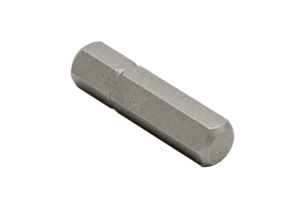- 6803 Parke East Blvd. Tampa, FL. 33610
- 800.728.4942
- 813-231-6305
$17.21
8 PC 5/16″ Shank Impact Hex Bit Set, Metric, 1.25″ OAL
8 PC 5/16″ Shank Impact Hex Bit Set, Metric, 1.25″ OAL
INCLUDES:
VI5HM3 3MM HEX – 5/16” DR. IMPACT BIT 1.25” LONG
VI5HM4 4MM HEX – 5/16” DR. IMPACT BIT 1.25” LONG
VI5HM5 5MM HEX – 5/16” DR. IMPACT BIT 1.25” LONG
VI5HM6 6MM HEX – 5/16” DR. IMPACT BIT 1.25” LONG
VI5HM7 7MM HEX – 5/16” DR. IMPACT BIT 1.25” LONG
VI5HM8 8MM HEX – 5/16” DR. IMPACT BIT 1.25” LONG
VI5HM9 9MM HEX – 5/16” DR. IMPACT BIT 1.25” LONG
VI5HM10 10MM HEX – 5/16” DR. IMPACT BIT 1.25” LONG
| Weight | .5 lbs |
|---|---|
| Dimensions | 6 × 3 × 2 in |
| Drive | |
| Type | |
| Unit | |
| Length |
You must be logged in to post a review.
All VIM tools carry a Limited Lifetime Warranty unless mentioned otherwise. Any tool that fails during normal use
will be repaired, replaced or a repair kit will be sent to you. Please note, consumables are not covered under warranty.

10MM HEX – 5/16” DR. IMPACT BIT 1.25” LONG

9MM HEX – 5/16” DR. IMPACT BIT 1.25” LONG

8MM HEX – 5/16” DR. IMPACT BIT 1.25” LONG

7MM HEX – 5/16” DR. IMPACT BIT 1.25” LONG

6MM HEX – 5/16” DR. IMPACT BIT 1.25” LONG

5MM HEX – 5/16” DR. IMPACT BIT 1.25” LONG

4MM HEX – 5/16” DR. IMPACT BIT 1.25” LONG

3MM HEX – 5/16” DR. IMPACT BIT 1.25” LONG
Reviews
There are no reviews yet.